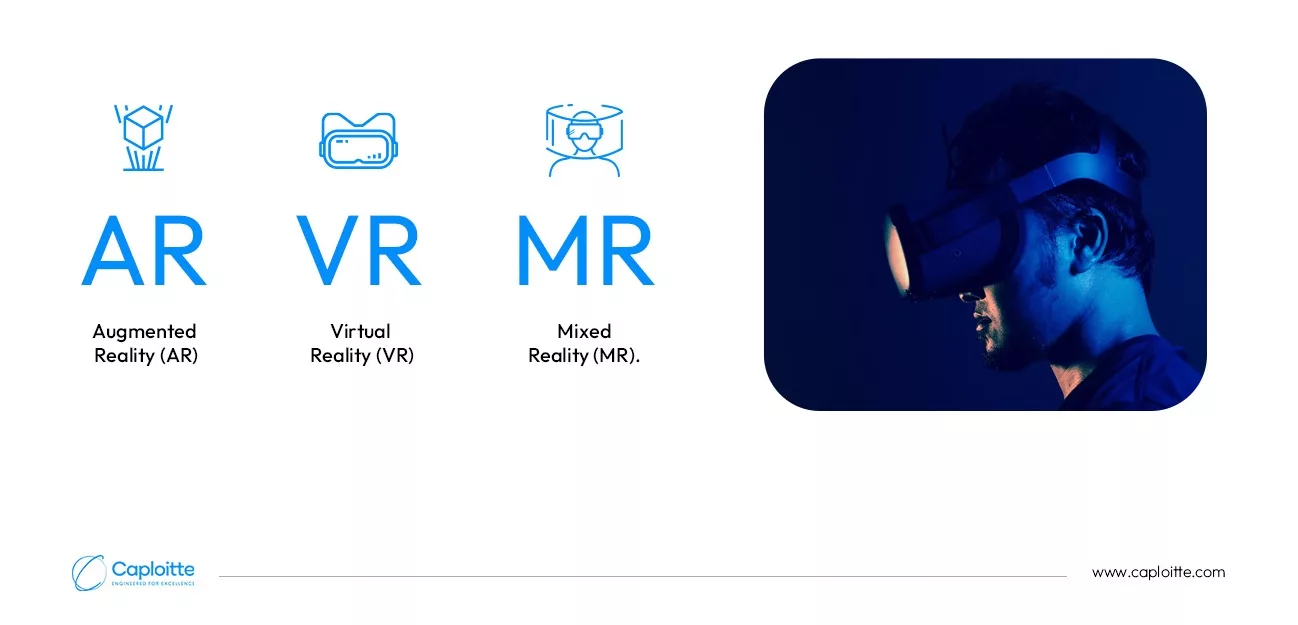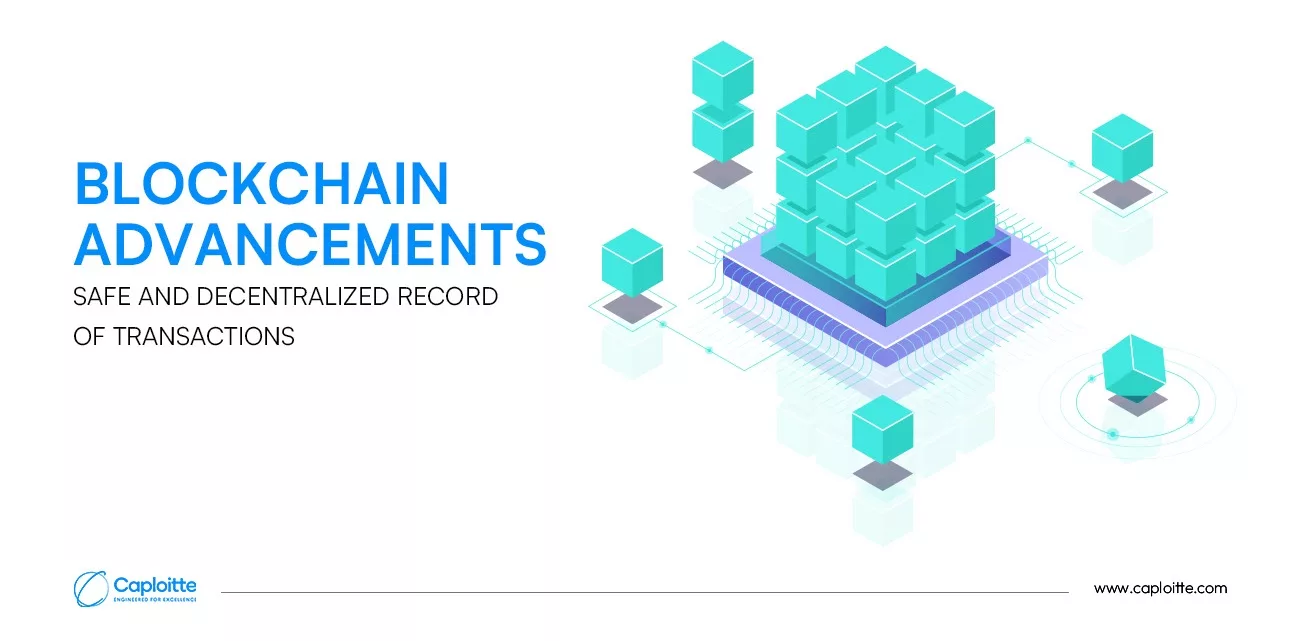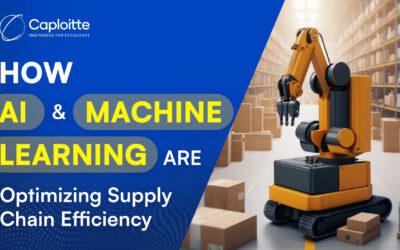Tech Trends: Emerging Technologies: What Startups Need to Know
-
Caploitte
-
04 Mar 2024
-
05 Min Read
Emerging Technologies
Tech Trends
Extended Reality
Blockchain Advancements
Cybersecurity Solutions
Sustainable Technologies
Conclusion
For technological startups, being at the forefront of innovation is not only beneficial but also necessary. The IT industry will continue to develop rapidly as time goes on, providing firms with excellent opportunities to disrupt whole sectors and expand their operations. Using the right digital trends-driven innovation may make businesses stand out from the crowd, attract investors, and encourage long-term success. The article examines the top technology developments that every tech company should be aware of.
AI-Powered Cybersecurity: Fighting Changing Dangers
Startups need to give AI-driven cybersecurity solutions a priority as cyber threats become more complex. These systems scan large datasets and identify abnormalities instantly by utilizing machine learning techniques. By putting sophisticated cybersecurity safeguards in place, startups can safeguard their confidential data and the confidence of their clients.
Emerging Technologies

A technological trend is a path or pattern that technological innovations, discoveries, or breakthroughs in one or more sectors are now taking. These trends-driven innovations demonstrate how technology is evolving and how it impacts various areas of society, the economy, and daily living.
Emergence of New Technologies
Technology trends can include both the development of new technologies and the introduction of improved ones. This might include advancements in artificial intelligence (AI), blockchain, biotechnology, quantum computing, and other fields.
Adoption and Integration
New technologies tend to be adopted by a broader number of areas as they develop. While businesses may integrate AI-driven analytics tools into their operations, healthcare practitioners may leverage telemedicine technology to provide remote patient care.
Effects on Markets and Industries
Innovation, competition, and change are fueled by technological advances across a range of industries and markets. For instance, the rise of e-commerce platforms has altered the retail industry, while technological advancements in renewable energy have upended the energy sector.
Modifying Customer Expectations and Behaviors
Technological developments frequently affect the expectations and behaviors of consumers. For example, the growing use of smartphones and mobile applications has altered how consumers shop, interact, and get information.
Economic and Social Implications
Technological developments may have significant effects on society and the economy. They may alter social norms and behavior, produce new career possibilities, and upend conventional employment structures. They could also bring up moral and legal issues with regard to data administration, security, and privacy.
Connectivity and Globalization
Globalization and interconnection have a growing influence on technology developments. Developments in digital platforms and communication technology have made it easier to collaborate globally, share expertise, and expand markets.
Accelerating Pace of development: As new ideas and trends appear more often, the rate of technological development is quickening. To remain relevant in a setting that is becoming more dynamic and competitive, businesses and individuals must constantly adapt and change.
Multidisciplinary Characteristics
Trends in technology frequently have an impact on fields including science, engineering, design, and business. Cross-pollination of ideas and interdisciplinary cooperation are frequent catalysts for trends-driven innovation and creativity in technological development.
Emerging technologies
The newest advancements and advances in technology that have the power to upend whole sectors, spur economic expansion, and change how we live and work are included in the category of emerging technology trends.
Tech Trends

The following are some of the most noteworthy new technologies:
1. Artificial Intelligence
The term artificial intelligence (AI) is not well known to most people. Many of them were unaware of what it was or how it would affect their particular companies. They were aware that AI had a great deal of potential to change business procedures, but they were unsure about how to implement AI in their own companies. Artificial Intelligence (AI) is a technology that is revolutionizing all aspects of life, even though it is not well known. People may rethink how we integrate data, assess it, and use the new knowledge to make better decisions with the aid of this adaptable tool.
2. Cutting-Edge Computing
The technique of processing and computing client data closer to the data source as opposed to on a centralized server or in the cloud is known as edge computing. In its most basic form, edge computing moves corporate apps, data storage, and processing power closer to the information consumption points of users. This piece provides a thorough explanation of edge computing along with some helpful recommended practices for edge computing.
The foundation of any successful business is data. The extraordinary increase in processing power and linked devices over time has led to the immense accumulation of data, severely taxing the already overloaded internet. This enormous data buildup causes problems with latency and bandwidth. By bringing complicated data closer to the original data source, edge computing provides a better option than typical corporate computing, which generates data at the client’s end or the user’s PC. Edge computing is the obvious answer that any contemporary organization needs, as it offers a range of benefits such as less internet traffic, fewer latency concerns, faster reaction times, lower security risks, better-performing apps, deeper insights, and vital data analysis, as well as enhanced customer experiences.
3. 5G Services and Connectivity
For entrepreneurs, the rollout of 5G networks opens up a world of opportunities. 5G’s increased speed and reduced latency have the potential to revolutionize sectors including gaming, healthcare, and the Internet of Things. Startups looking to provide better user experiences and cutting-edge solutions should investigate 5G-enabled apps and services.
4. Extended Reality (XR)

Extended Reality (XR) is a word that is now in use to refer to all immersive technologies. In addition to the ones that are yet to be developed, there are the ones that we currently have:
- Augmented Reality (AR)
- Virtual Reality (VR)
- Mixed Reality (MR)
Through the creation of completely immersive experiences or the melding of the virtual and “real” worlds, all immersive technologies expand the boundaries of reality as we know it. Let’s take a closer look at each of the new technologies in order to have a better understanding of XR.
Augmented reality (AR)
Virtual items and information are superimposed on the actual world in augmented reality. With the use of digital elements like text, motion, and photographs, this experience improves the actual world. The experience is accessible via televisions, tablets, and smartphones in addition to AR glasses. As a result, users are able to participate and observe what is happening in front of them without feeling cut off from the outside world.
Virtual reality (VR)
Users are completely submerged in a simulated digital environment during a virtual reality encounter, as opposed to an augmented reality one. To experience the full panorama of a virtual reality (VR) environment that deceives the user’s brain into thinking they are, for example, entering any other new world that the VR creators have built, one needs to don a VR headset or head-mounted display. Early users of this technology included the gaming and entertainment sectors, but businesses in a variety of other sectors, including healthcare, engineering, construction, the military, and more, are finding virtual reality to be quite beneficial.
Mixed reality (MR)
Digital and physical things coexist and are capable of real-time interaction in mixed reality. This is the newest generation of immersive technology, often known as hybrid reality. Compared to VR or AR, it needs a lot more computing power and an MR headset. One excellent example is Microsoft’s HoloLens, which, among other things, lets you place digital items within the space you’re in and modify them in whatever way you see fit. Businesses are looking at how they may use mixed reality to assist projects, solve issues, and improve their operations.
5. Blockchain Advancements

A blockchain is a distributed ledger or database that is shared by all nodes in a computer network. Though they have applications outside of cryptocurrencies, they are most recognized for playing a critical part in cryptocurrency systems that preserve a safe and decentralized record of transactions. Any sector may employ blockchain technology to make data immutable, or incapable of being changed.
The one place where confidence is required is when a user or program submits data, as blocks cannot be changed. This feature lessens the requirement for reliable third parties, which are typically auditors or other people who incur expenses and make mistakes.
Blockchain applications have multiplied since the launch of Bitcoin thanks to the development of smart contracts, decentralized finance (DeFi) apps, non-fungible tokens (NFTs), and other cryptocurrencies.
A blockchain is composed of scripts, which are programs that do various tasks commonly done in a database, such as inputting, retrieving, and storing data. For a distributed blockchain to be deemed valid, several copies must be maintained on many devices and must match.
The blockchain collects and stores transaction data in blocks, much like a cell in an information spreadsheet. As soon as it is filled, the data is encrypted and a hexadecimal number known as the hash is produced. The hash is then appended to the following block header and encrypted with the rest of the block’s contents. Consequently, a chain of connected blocks is created.
6. Cybersecurity Solutions

Cybersecurity solutions are technological tools and services that help protect businesses from cyberattacks. These assaults can have a number of detrimental effects, such as application downtime, theft of sensitive data, damage to an organization’s brand, fines for noncompliance, and other penalties. A vital part of cybersecurity in the face of the many diverse and ever-changing dangers that exist in today’s security landscape are tools.
App Security: ️ Like a security guard for your software, it checks for weaknesses and stops attacks before they happen.
Endpoint Security: On your computers and servers, it acts as a bouncer, spotting and blocking bad guys like malware and unauthorized access.
Network Security: Watches over your entire network like a hawk, detecting suspicious activity and letting you block or fix threats.
IoT Security: As more devices connect to your network (even your smart lightbulbs!), this helps keep them safe and secure.
Cloud Security: When your data lives in the cloud, this helps you find and fix any security holes to keep it protected.
7. Innovations in Biotechnology
In the quickly developing field of healthcare technology, biotechnology is at the forefront of trends-driven innovation and advancement. Healthcare has changed as a result of the commercialization of biotechnology products, which provide innovative answers to persistent issues and enhance patient outcomes.
The biotech revolution started in the late 20th century when researchers started using biological systems’ capabilities to create novel treatments and diagnostics. Biotech products, in contrast to traditional medications, use the complex mechanisms of living things to treat a variety of illnesses. This strategy has opened the door for innovative medical procedures and cutting-edge technology that were previously thought of as science fiction.
8. Sustainable Technologies

Innovation that fosters social and economic progress while keeping the environment in mind is referred to as “sustainable technology”. These new technologies seek to dramatically reduce ecological and environmental risks while producing a sustainable output. Sustainability in technology can be defined in a number of ways:
Place shift: Its production process supports the substitution of non-biodegradable ingredients with biodegradable ones. Non-renewable resources can also be replaced with renewable ones.
Avoidance: Sustainable technology prevents pollution, deterioration, and other negative environmental impacts during production or use.
Efficiency: The method makes effective use of energy and
Conclusion
Technology entrepreneurs will confront a wide range of fascinating opportunities and difficulties in 2023. Startups may place themselves at the forefront of trends-driven innovation and build game-changing solutions that disrupt sectors by adopting the top ten technological trends listed in this article, which range from artificial intelligence (AI) and blockchain to 5G and sustainable technologies. To sum up, Tech Trends offers unmatched technical breakthroughs and presents entrepreneurs with new chances for development and creativity. Startups may put themselves at the forefront of their respective sectors and map out a successful future by remaining educated and embracing these top-rising tech trends-driven innovations.
Share this post:
Read More
- All
- AI
- AR
- DevOps and CI/CD
- E-commerce
- FinTech
- IoT
- Mobile Development
- Outstaffing
- Security
- SEO
- Tech Trends
- Web Design
- Web Development




